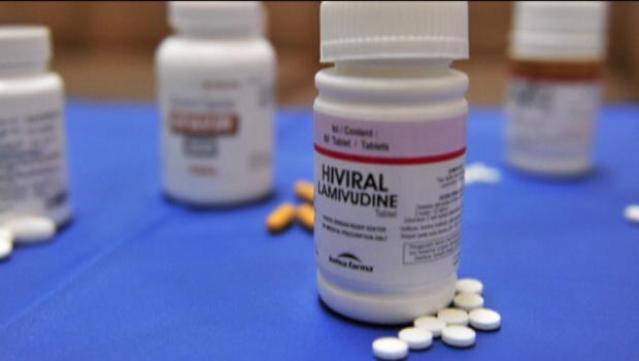Is it possible to become infected with HIV at home? Risk of hepatitis C infection at home
Events
Two weeks after a child was first cured of HIV, scientists said: similar treatment can help adults.
The most important thing is to start early treatment, although this does not guarantee success.
Professor Azier Saez-Sirion(Asier Sáez-Cirión) from Pasteur Institute in Paris analyzed 70 people with HIV who were treated with antiretroviral drugs between 35 days and 10 weeks after infection. This is much earlier than HIV patients are usually treated.
All participants' medication regimens were interrupted for various reasons. For example, some people made their own decisions to stop taking medications, while others tried other medications.

In most volunteers, the disease returned after stopping treatment, and the virus recurred to the same level as before treatment. But in 14 patients, among whom there were 4 women and 10 men, there were no relapses of the virus after stopping treatment, which was carried out for an average of 3 years.
Although 14 patients had traces of HIV in their blood, the levels were so low that their bodies could control it without medication.
Treatment of HIV infection
On average 14 participants stopped taking medications 7 years ago, and one of them managed without medication for 10.5 years.

Just recently, it was announced that a baby was “functionally cured” of HIV after being given three antiretroviral drugs almost immediately after birth: zidovudine, lamivudine And nevirapine. However, experts warned that rapid treatment is not suitable for everyone, but it is important to start as early as possible.
"There are three benefits to early treatment," Saez-Siriona explained. "This limits the HIV reservoir, the diversity of the virus, and preserves the immune response to the virus that controls it."

However, none of the 14 patients were so-called “super-controllers,” that is, the 1 percent of people who are naturally resistant to HIV and quickly suppress the infection. Additionally, most had severe symptoms that led to early treatment.
"No matter how paradoxical it may sound, the worse they felt at the beginning, the better they felt later", the scientists said.
How long does it take for HIV to appear?
A month or two (2-4 weeks at the earliest) after HIV has entered the body, the first signs of infection may appear. But sometimes HIV symptoms may not appear for years or even ten years after infection. This is why it is important to get HIV tests to help detect the presence of the virus.
First signs of HIV

During the first 2 to 4 weeks after HIV infection (and up to 3 months), 40 to 90 percent of people may experience acute illness symptoms that are similar to the flu. It is called " acute retroviral syndrome" and is a natural reaction to HIV infection. At this time, the level of the virus in the blood is high, and a person can more easily transmit it to others.
Symptoms may include:
Heat
Night sweats
A sore throat
Muscle pain
Headache
Fatigue
Enlarged lymph nodes
After the early symptoms of HIV disappear, the virus becomes less active, although it is still present in the body. During this time, the person may not experience any symptoms. It is called latent phase, which can last up to 10 years and longer.
After HIV progresses to AIDS, symptoms of fatigue, diarrhea, nausea, fever, chills and others appear.
Probability of HIV infection

The risk of HIV infection depends on various factors.
Transfusion of infected blood - about 90 percent
Pregnancy and childbirth – 30-50 percent
Breastfeeding – about 14 percent
Intravenous injection – 0.5 -1 percent
Accidental sticking with a needle contaminated with HIV - 0.3 percent
Unprotected anal sex – 3 percent
Unprotected vaginal sex – about 1 percent
Hepatitis C is a common viral liver disease. Who does it threaten? What are the ways of transmitting the virus? What precautions should you take at home to avoid encountering it? Let's consider these questions further.
It is worth emphasizing the danger of infection with the hepatitis virus: even when it becomes chronic, it causes irreparable damage to the patient’s liver, eventually leading to cirrhosis. The chance of getting liver cancer also increases.
Hepatitis is most severely affected by alcohol abusers, children and the elderly. In some cases, hepatitis C is fatal.
How does the virus spread?
Virus bodies are transmitted through blood and (much less frequently) through other body fluids. Since the main concentration of the virus in a sick person is observed in the blood, you should pay attention to the circumstances under which you can come into direct contact with it.
Infection with the virus through the blood is inextricably linked with injury to the skin or mucosal surface.
You can become infected at home in the following cases:
Separately, it is worth mentioning the use of a common syringe needle: in medical practice in our time this is practically impossible, but infection in this way occurs among disadvantaged sections of the population, in particular drug addicts.
Given the information provided, some precautions should be taken. First of all, pay attention to maintaining sterility during all procedures that may injure the skin and mucous membranes.
 Visit only those beauty salons that have autoclaves for sterilizing instruments, and needles are in disposable sealed containers with an integrity indicator.
Visit only those beauty salons that have autoclaves for sterilizing instruments, and needles are in disposable sealed containers with an integrity indicator.
Do not hesitate to ask a doctor or specialist to show you disposable needles and a schedule for sterilizing instruments - your health and life depend on it.
If in tattoo parlors (especially in home studios) the artist tells you that he boils the needles, you should refuse the procedure in such an establishment. The same should be done if your dentist uses instruments of questionable cleanliness or does not change your gloves to new ones.
Sharing a toothbrush, like sharing a needle or scissors, in any case does not pose a certain risk of transmitting the virus. This way you can get not only hepatitis C, but also many other dangerous diseases. Such actions violate the rules of hygiene in general and threaten various inflammations, including purulent ones.
There is also a small (about 3-5%) chance of contracting hepatitis through unprotected sex or kissing. This also mainly occurs upon contact with blood – i.e. during aggressive sex in case of damage to the mucous membrane or in the presence of wounds in the mouth.
To avoid infection, you should resort to barrier protection - condoms for anal and vaginal sex, special protective films for oral sex. You should also avoid unprotected sex during menstruation. Typically, transmission of the virus in the absence of damage to the mucous membrane is possible only with reduced immunity in an uninfected person (chronic disease, HIV, hormonal therapy, etc.).
Information posters often promote having one regular sexual partner as a measure to prevent hepatitis and other viral diseases. This is not entirely true: contact with one but infected partner is just as dangerous as contact with many. The only valid precautions are barrier contraception during sexual intercourse and regular medical examination.
 There is also a relatively small chance of transmission of the virus from mother to child. This probability increases if there is damage to the skin of the newborn during childbirth, because in this case, the mother's infected blood may enter the wound.
There is also a relatively small chance of transmission of the virus from mother to child. This probability increases if there is damage to the skin of the newborn during childbirth, because in this case, the mother's infected blood may enter the wound.
Women with hepatitis are also advised to refrain from breastfeeding: there is no data on the content of the virus in milk, but if the baby accidentally injures the skin of the nipple, then there is a high probability of infection in this way.
There is a possibility of transmission of the virus in a fight, when the blood of an infected person gets into the mucous membrane or wound of a healthy person. This case, of course, is difficult to predict, so after severe beatings, accidents and other emergency situations, you should donate blood for viral infections.
Prevention measures
The hepatitis virus is not transmitted by airborne droplets: there is no risk of becoming infected from a person when talking, sharing utensils or clothing, or shaking hands. However, if the blood of an infected person comes into contact with common objects, it is necessary to use disposable gloves to disinfect them with a chlorine solution or boil them for several minutes.
 If this rule is followed, infection through common objects is also impossible. There is no chance of infection from the bite of blood-sucking insects.
If this rule is followed, infection through common objects is also impossible. There is no chance of infection from the bite of blood-sucking insects.
If infection occurs, symptoms of the disease do not always appear. This is partly due to the fact that sometimes the human immune system independently suppresses the activity of hepatitis and spontaneous recovery occurs.
But in most cases, the disease becomes chronic, and the person becomes a carrier of the virus. If this happens, it is necessary to regularly visit a doctor and undergo examination, because the risk of virus activation remains throughout life.
Truth and myths about the transmission of the most dangerous virus of the 21st century
Change text size: A A
We are accustomed to thinking that HIV infection can only occur in those people who fall into the category of “vulnerable groups” (experienced drug users) or who practice promiscuity - multiple sexual relationships, as well as non-traditional sexual orientation.
Many are still convinced that AIDS is just a horror story and that such a disease does not exist. Unfortunately, stubborn statistics tell a completely different story. According to experts, HIV infection has now spread beyond vulnerable groups. Today, the problem of HIV infection concerns everyone.
And such statements again come from statistics. On this moment More than 824 thousand PLWHA (persons living with HIV/AIDS) are registered in Russia. Moreover, one hundred thousand of them - only in 2015. Every year, an increasing number of people are diagnosed with HIV infection - quite socially prosperous, 30 - 40-year-old married people. Unfortunately, not all infected people know about their status. A person can live with the virus in the blood for some time without knowing about it. And infect others. Together with experts, we are understanding how the human immunodeficiency virus is transmitted.
MAIN ROUTES OF TRANSMISSION
1. Unprotected sex
The share of sexual heterosexual transmission of HIV on average in Russia is now 40.3%. And, for example, according to the chief physician of the Irkutsk Regional Center for the Prevention and Control of AIDS and Infectious Diseases (AIDS Center) Yulia Plotnikova, 76% of patients identified since the beginning of 2016 in the Irkutsk region received the virus due to unprotected sex.
Moreover, women are infected from men three times more often.
This happens due to biological and anatomical features,” comments Evgenia Zhukova, head of the epidemiology department of the AIDS Center of the Moscow Region. - In addition, sexually transmitted diseases and inflammatory diseases of the genitourinary system increase the transmission of infection.
2. From infected mother to child
This is the so-called vertical path, from mother to child during pregnancy, childbirth and breastfeeding, says Evgenia Zhukova. - If timely prevention of mother-to-child HIV transmission with antiretroviral drugs is not carried out, the risk can be up to 50%. If three-stage prophylaxis with antiretroviral drugs is followed during pregnancy, childbirth and another 4 weeks after the birth of the baby, as well as by excluding breastfeeding, the risk of transmission of infection is reduced to 1-2%.
Indeed, thanks to the prevention of vertical transmission in our country, the risk of such transmission of HIV infection from mother to child was 2.2%, which corresponds to the best international experience.
3. When using shared syringes
This route of infection was the most “popular” in 1990 - 2000, when young people massively tried injecting drugs. Now the share of this route of infection is decreasing, but the likelihood of HIV infection through syringes and shared containers is still high.
4. In case of transfusion of contaminated blood
Such cases are now extremely rare. Because special safety measures have been introduced when collecting blood and its components, and all donors undergo mandatory testing for HIV.
5. Through manicure and shaving accessories
The likelihood of infection through personal hygiene items that can injure the skin or mucous membranes (including a toothbrush), although small, is still possible. It all depends on the amount of infected blood that could get on these objects.
6. At the tattoo and piercing parlor
The general tools used in a tattoo parlor are also a risk area. It is very important that all tools in such salons, including manicure studios, are processed without fail. In tattoo parlors, the virus can persist, including in containers with ink (which is used repeatedly, unlike disposable attachments on tattoo machines). The human immunodeficiency virus is very unstable in the external environment and quickly dies when properly processed.
AND HOW TO GET A VIRUS IS EXACTLY IMPOSSIBLE
1. When bitten by a mosquito
Numerous studies conducted on this matter clearly prove that this route of HIV infection is impossible. Just like when bitten by ticks, bedbugs and other unpleasant insects.
2. For sneezing and coughing
The amount of HIV sufficient for infection is contained only in certain biological fluids: blood, semen, vaginal secretions. You simply cannot become infected with HIV by sneezing and coughing.
3. When kissing and hugging
The fact that the virus is not transmitted through a handshake, hugs, or even kisses has been proven by many couples in which one partner is infected and the other is healthy.
According to statistics, from 30 to 50% of HIV-positive patients live in so-called discordant couples, where one partner is positive and the other is not, explains Evgenia Zhukova. - If an HIV-positive partner takes antiretroviral therapy, and the couple practices protected sex (with a condom), then such couples have a completely normal healthy relationship.
That is, hugging, greeting, kissing, and making friends with HIV-positive people is completely safe. But, unfortunately, this is the most persistent myth, which gives rise to a somewhat wary attitude in society towards people with HIV status. Because of this, unfortunately, many people, having learned that they have HIV, refuse to register and start antiretroviral therapy in a timely manner. But it can, if not rid an HIV-positive person of the virus, then provide him with a completely normal, fulfilling life. Indeed, with proper treatment, the amount of virus in the blood can decrease to undetectable.
Fortunately, the days when employers refused positions to infected people, when colleagues turned away and friends abandoned them, are becoming a thing of the past. Now the attitude towards HIV-positive people who receive support from the state and undergo treatment is slowly but surely changing. Read about this in our material.
4. When using shared dishes, towels, and clothes
Even if contaminated blood comes into contact with clothing or towels, the virus will be destroyed by ordinary washing or washing with detergent.
5. At the dentist's office
According to the President of the Russian Dental Association, Vladimir Sadovsky, in modern clinics they carefully monitor safety - all instruments are disinfected, surfaces are treated. Therefore, you simply have no chance of getting the virus in the dentist’s chair.
There are still many myths around the human immunodeficiency virus. They create fear, even panic. Especially those who find out that they are infected. And sometimes this panic prevents you from making the right decision. Namely, register and start taking medications. After all, only timely therapy will protect an HIV-positive person from developing AIDS and give many years of a fulfilling life.
Therefore, the Russian Ministry of Health pays great attention not only to the problem itself, the treatment of HIV-positive citizens, but also, first of all, to preventing the development of the virus.
In solving this problem, the participation of every citizen is important, he believes Minister of Health of Russia Veronika Skvortsova. - Only a person’s responsible attitude towards his behavior, compliance simple rules, as well as regular testing can protect against HIV infection and prevent its further spread. It is important to remember that today HIV is not a death sentence. Timely diagnosis and treatment allow an infected person to live a normal life, start a family, and be happy.
IMPORTANT
Every year in Russia more than 30 million people are tested free of charge, and this figure continues to grow.
Even if you are completely confident in all your partners, have never used drugs, have never had a blood transfusion, and always use only your own hygiene products, you still need to get tested for HIV.
IN Lately Cases of HIV transmission through sexual contact are increasing. Therefore, it is very important that not only you, but also your partner knows your HIV status. Unfortunately, most HIV-positive people simply do not know that they are infected. And they infect others. Therefore, knowing the status of your partner is no longer just a matter of trust. If a person is offended by your proposal to check your HIV status, think about it - will he take care of you and your health in the future?..
After all, you can take a free HIV test very simply and quickly: in community clinics, psychosocial counseling rooms and anonymous examinations in healthcare institutions and Centers for the Prevention and Control of AIDS. detailed information Online




